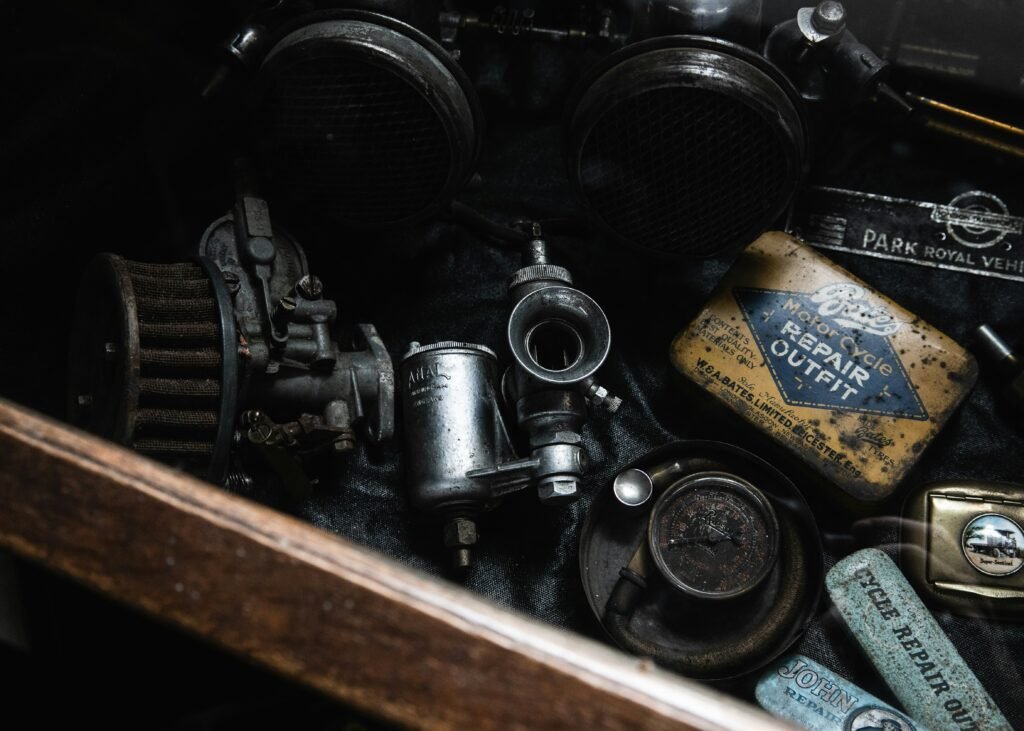
Petrol is the lifeblood of modern vehicles, but what if what you’re pouring into your tank is quietly causing damage every time you drive? Across the UK, rising reports of contaminated fuel problems have left motorists confused, facing costly repairs, and questioning whether the petrol they buy is as safe and refined as it should be. Whether you’re driving a family hatchback or a high-performance car, the threat of bad fuel silently wreaking havoc on your engine is real — and increasingly common in 2025.
Fuel contamination isn’t just a one-off fluke or a fringe concern. With more vehicles relying on high-efficiency combustion and tighter emission controls, even the smallest deviation in fuel purity can lead to cascading failures. The issue spans petrol stations, supply chains, tankers, and even how fuel is stored underground. Understanding the problem isn’t just good practice — it’s an essential part of protecting your car, your wallet, and your peace of mind.
This article explains what contaminated fuel is, how it affects engines in 2025, warning signs to watch for, causes of the issue, and how to protect yourself.
What Are Contaminated Fuel Problems?
Fuel contamination happens when unwanted substances like water, dirt, or microbes mix with petrol or diesel. This leads to degraded fuel quality, which in turn disrupts combustion, damages sensitive engine components, and impairs vehicle performance. In simple terms, contaminated fuel problems refer to any situation where fuel doesn’t meet the required purity standard. The result? decreased engine performance, increased emissions, malfunctions, and in extreme situations, total engine failure.
How Contaminated Fuel Affects Engines in 2025
Modern engines are finely tuned machines. In 2025, technological advancement means that cars are more efficient than ever — but also more vulnerable to poor-quality fuel. Direct injection systems, turbochargers, diesel particulate filters (DPFs), and fuel pressure regulators are incredibly sensitive to contaminants. When fuel is compromised, it doesn’t burn cleanly.This may result in misfiring cylinders, blocked injectors, or incomplete combustion. Drivers may notice a drop in acceleration, difficulty starting, stalling, or the dreaded check engine light. What once might have been brushed off as a rough idle can now be a sign of something more sinister beneath the bonnet.
Common Causes of Fuel Contamination
In 2025, the causes of contaminated fuel problems range from ageing infrastructure to increasingly volatile weather patterns and logistical oversights in fuel distribution.
A major cause is water ingress — often due to poor tank sealing or condensation inside underground tanks. When water mixes with petrol or diesel, it can lead to microbial growth (especially in diesel), sludge formation, or rust flakes being carried into your car’s system.
Fuel station storage tanks can also degrade over time. If not properly maintained, they may introduce dirt, algae, or rust particles into the supply. Additionally, supply chain errors such as misfuelling (adding diesel to petrol tanks or vice versa) or using recycled or off-spec fuel can exacerbate the problem.
In some areas of the UK, climate change has increased rainfall and humidity, which has increased the likelihood of subterranean tank condensation and the ensuing pollution.
Signs Your Car May Be Affected by Bad Fuel
If you’re experiencing any of the following, contaminated fuel problems might be to blame:
- Your engine misfires or jerks during acceleration.
- You notice a sulphur-like or sour odour from the exhaust.
- There’s a loss of power, especially on inclines or when overtaking.
- Your fuel economy drops sharply without explanation.
- The vehicle struggles to start, stalls frequently, or emits black smoke.
Of course, these symptoms could point to other mechanical issues too. But if multiple signs appear shortly after refuelling — especially from a lesser-known or remote station — contaminated fuel is a strong possibility.
The Real Cost of Contaminated Fuel
Fixing contaminated fuel problems can range from minor inconvenience to major financial drain. At best, you might need to flush the fuel tank and replace the fuel filter. At worst, you’re looking at injector replacements, catalytic converter repairs, or even full engine rebuilds.
According to the RAC, average repair costs for fuel contamination cases in 2024-2025 ranged from £400 to £3,000, depending on severity and vehicle type. Worse still, many insurance policies classify bad fuel as a maintenance issue — meaning you could be left footing the entire bill.
In March 2025, a notable incident in Greater Manchester saw over 150 vehicles affected after a local filling station accidentally received a diesel delivery instead of unleaded. The damage spanned taxis, delivery vans, and even electric hybrids with auxiliary fuel tanks, sparking legal action and compensation claims.
Why Contaminated Fuel Problems Are Rising in the UK
A growing number of complaints to Trading Standards and motoring organisations in 2025 suggests that contaminated fuel problems are on the rise. Factors driving this include ageing forecourt infrastructure, a fragmented supply chain, and an increase in smaller, independent petrol stations that may not follow strict fuel storage protocols.
With the UK’s push toward net zero, some suppliers have been blending biofuels or ethanol with conventional fuel. While this is great for emissions, these blends are more hygroscopic — meaning they absorb water easily — and that makes contamination more likely if tanks aren’t properly sealed or maintained.
Government testing in Q2 2025 found that up to 1.6% of sampled fuels across UK stations were out of spec — a small number statistically, but significant when scaled across millions of fuel transactions.
What To Do If You Suspect Fuel Contamination
If you think your car has been affected by bad fuel, act immediately to minimise damage.
- First, stop driving the vehicle to prevent further contaminants from circulating through the fuel system. Get the car to a garage or arrange for recovery. Inform your fuel station with proof of receipt and timing of fill-up. Most reputable suppliers will investigate and compensate if they’re at fault.
- Mechanics will often drain the fuel tank, clean the system, replace filters, and test injectors or pumps. Time is of the essence — continuing to drive could turn a £200 fix into a £2,000 rebuild.
- In 2025, more UK garages are now equipped with fuel testing tools that can quickly detect ethanol levels, water content, and particulate matter — making it easier to confirm contamination and take action quickly.
How to Avoid Contaminated Fuel Problems in the First Place
- While it’s impossible to control what happens underground, there are still precautions you can take to avoid contaminated fuel problems.
- Always refuel from high-traffic, reputable stations where fuel turnover is fast — this reduces the risk of stale or water-logged fuel. Try to avoid refuelling during or right after a tanker delivery, as the process can stir up sediment in underground tanks.
- Keep receipts from each fill-up in case your car begins showing symptoms. In 2025, some drivers are using smartphone apps to log refuelling points, fuel brand, and mileage — creating a paper trail that can help with compensation claims.
- If your vehicle is diesel-powered and rarely driven, consider adding a stabiliser or biocide to the fuel tank. These additives help prevent microbial growth, especially if you tend to fill up and leave the tank unused for weeks at a time.
How the UK Is Responding in 2025
The UK government and industry regulators are starting to respond to the spike in fuel contamination. The British Standards Institution (BSI) is updating storage and testing guidelines, while the Petrol Retailers Association has launched new training initiatives for independent operators.
New regulations being proposed in late 2025 may also require fuel stations to display last delivery dates and tank maintenance schedules, giving consumers more transparency over fuel safety.
Motorist groups like The AA and RAC have increased their roadside diagnostic capabilities, now using portable analysers to detect fuel faults within minutes. This gives drivers faster clarity and greater leverage when seeking redress from suppliers.
Real-Life Examples of Drivers Hit by Contaminated Fuel
In May 2025, a Surrey-based family returning from a bank holiday weekend noticed their engine struggling moments after filling up at a motorway service station. Within minutes, their SUV stalled. The garage later found water in the tank and rust particles clogging the injectors. Despite reporting the issue, they waited weeks for compensation.
Meanwhile, a delivery company in Birmingham suffered operational chaos when three of their vans broke down in the same week. After a fleet mechanic investigated, the culprit was traced back to a single forecourt’s poorly maintained diesel tanks.
Even commercial drivers aren’t immune. A licensed taxi driver in Leeds had to replace his catalytic converter after fuelling up at an independent outlet. He lost a week of income while his car sat in the workshop — all due to petrol that failed regulatory specs.
Frequently Asked Questions
What does contaminated fuel do to a car?
Contaminated fuel can cause incomplete combustion, misfiring, clogged filters, damaged injectors, and engine stalling. Over time, it can lead to serious engine damage and costly repairs.
How can I tell if I’ve used contaminated fuel?
Common signs include rough idling, poor acceleration, black smoke, stalling, and a drop in fuel efficiency. If these symptoms appear after refuelling, it could indicate contamination.
Can contaminated petrol be fixed?
Yes, but it depends on how quickly it’s identified. Draining the tank, cleaning the system, and replacing filters often resolves the issue. Severe contamination might require injector or engine part replacements.
Will my insurance cover contaminated fuel repairs?
Usually, standard insurance does not cover fuel contamination unless you have mechanical breakdown or specific fuel damage coverage.You might have to ask the gasoline supplier for reimbursement.
Is this problem getting worse in the UK?
Yes. In 2025, the number of complaints regarding bad fuel has increased, particularly with the rise of biofuel blends and older infrastructure at smaller stations contributing to water and particle contamination.
Final Thoughts
Contaminated fuel problems are no longer rare, isolated cases — they’re a growing reality in the UK’s motoring landscape.The margin for error has never been smaller due to the combination of more sophisticated engines, more stringent emissions regulations, and changing fuel mixes. Drivers today must be more aware, proactive, and prepared to respond quickly when things go wrong at the pump.
Understanding the causes, recognising the symptoms early, and knowing your rights are all essential to keeping your vehicle safe and operational. As awareness and regulations catch up with the problem, we can only hope future safeguards reduce the risks for motorists. Until then, where and how you fill up could make all the difference.
To read more: click here





